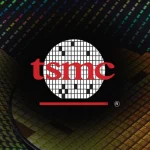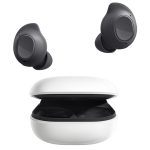Prices are accurate at the time of publication.
Antonio Villas-Boas/Insider
When you buy through our links, Insider may earn an affiliate commission. Learn more.
- Apple’s Ceramic Shield glass is amazingly scratch resistant, but my wife’s iPhone 13 Mini still got a scratch.
- My iPhone 13 Pro Max only has a tiny scratch after seven months of daily use.
- However, you still can’t go wrong with a screen protector and case for the best protection.
Starting with the iPhone 12 series in 2020, Apple introduced a new type of display glass called “Ceramic Shield” that the company claims is “tougher than any smartphone glass.”
I don’t have a spare iPhone 12 or iPhone 13 I can intentionally break for official drop tests. However, I can attest that Apple’s Ceramic Shield glass is strong and particularly resistant to scratches, based on my personal experience over the past seven months since its release.
Antonio Villas-Boas/Insider
In those months, I’ve been using the iPhone 13 Pro Max with Apple’s Clear Case with MagSafe, without a screen protector, and there’s only the smallest, slightest scratch around the front speaker. Otherwise, it looks as good as it did when I first unboxed it.
I’m surprised the iPhone 13 Pro Max’s screen hasn’t scratched more, considering what it’s been through.
Antonio Villas-Boas/Insider
I’m fairly careful with the phones. I don’t put them in the same pocket as keys, for example. Nor do I stuff them in a bag with objects that could scratch the screen, like a charging cable with metal connectors.
Still, over the last seven months, the iPhone has experienced several waist-high (about three-feet) drops onto concrete, gravel, wood, and tile. It has also fallen out of my pocket in my car and slid down the sides of the driver’s seat on numerous occasions, knocking and scraping against the seat, metal seat frame, plastic air vents, and plastic interior trim.
The iPhone 13 Pro Max also endures my one-year-old who loves to gnaw on the phone when she’s teething. She’s dropped the phone herself a few times from the sofa and bed, where it often lands among a pile of plastic baby toys.
No doubt, the case I’m using has surely saved the screen from certain scratching events, thanks to the lip around the edges that helps protect the display. But still, that’s impressive durability with no screen protector.
However, the iPhone’s Ceramic Shield glass isn’t invincible.
Antonio Villas-Boas/Insider
If there’s one person who treats their electronics worse than I do, or my one-year-old, it’s my wife. And yes, her iPhone 13 Mini’s screen has a deeper, more noticeable scratch. And that’s despite the fact that she’s using an Apple Silicone case.
Indeed, I’ve observed that she doesn’t try as hard to be careful with her phones as I do. And despite Apple’s strong Ceramic Shield iPhone displays, I’ll be gifting her a screen protector soon.
Apple’s Ceramic Shield certainly seems stronger than previous iPhones, but it still hasn’t eliminated the need for a screen protector if you’re particularly concerned about scratching your screen.
Android phones also have strong glass, but Android phone makers aren’t comfortable making Apple’s bold claim.
The latest phones from Samsung, Google, and OnePlus all sport Corning’s Gorilla Glass Victus.
Samsung only that Gorilla Glass Victus on the Galaxy S22 series “can better survive drops and offer tough scratch resistance.”
Google says its Gorilla Glass Victus displays have “up to 2x better scratch resistance than previous Pixel phones” for the Pixel 6 series.
And OnePlus says the OnePlus 10 Pro has the “strongest cover glass ever on a OnePlus device, thanks to Corning Gorilla Glass Victus that provides greater protection against scratches and drops.” With that said, OnePlus ships the OnePlus 10 Pro with a screen protector already, so you should be covered.
But none of these companies are comfortable enough to claim that it’s the “toughest glass on any smartphone,” like Apple does.
Even Corning itself, which worked with Apple to make Ceramic Shield glass for iPhones, can only claim that “Gorilla Glass Victus is the tough device glass you’ve been asking for,” which isn’t as specific as Apple’s statement.
The bottom line
Apple’s Ceramic Shield has proven in my experience to be particularly effective at fending off scratches during everyday use — that is, if you’re careful. If you’re a particularly careful phone user who doesn’t want to use a screen protector, this is another reason to consider an iPhone.
In the event that you’re not careful, or just need complete peace of mind, you should still buy a screen protector for the extra layer of protection.
The Spigen EZ FIT Screen Protector is included in our best screen protectors buying guide, and there’s a new version for the iPhone 13 series.
Powered by WPeMatico






